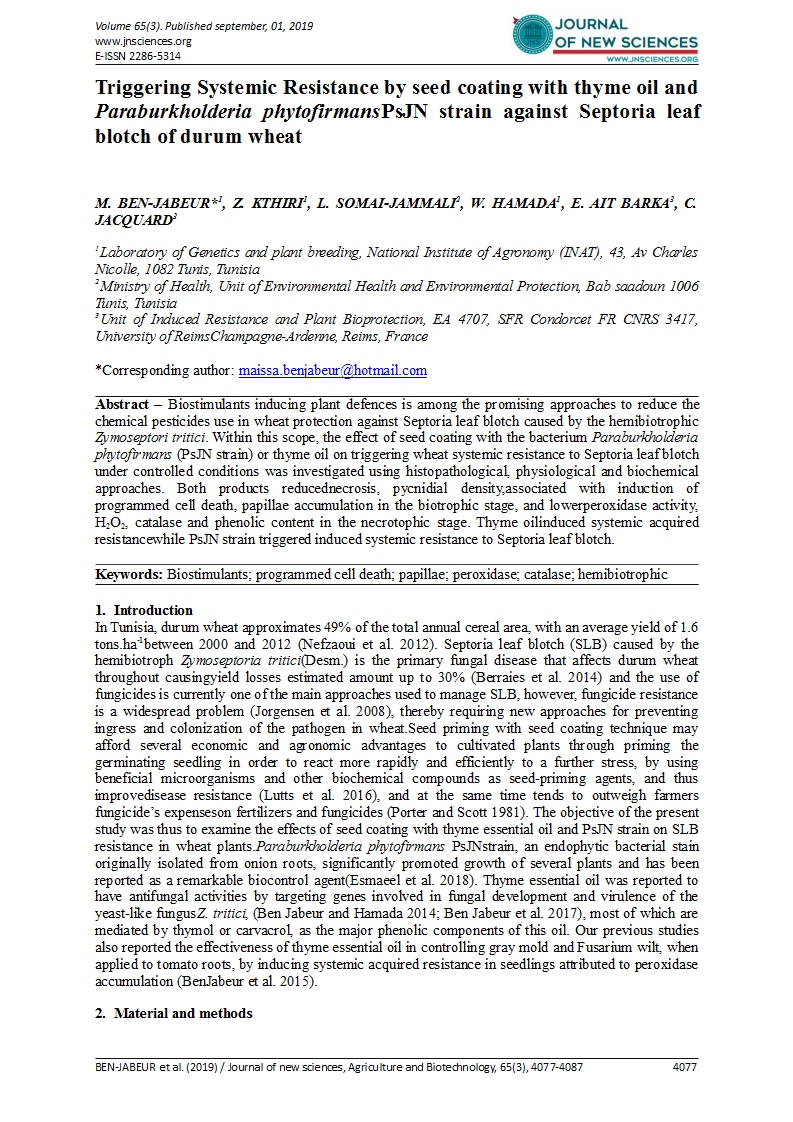

Triggering Systemic Resistance by seed coating with thyme oil and Paraburkholderia phytofirmansPsJN strain against Septoria leaf blotch of durum wheat
M. BEN-JABEUR*1
Z. KTHIRI1
L. SOMAI-JAMMALI2
W. HAMADA1
E. AIT BARKA3
C. JACQUARD3
1Laboratory of Genetics and plant breeding, National Institute of Agronomy (INAT), 43, Av Charles Nicolle, 1082 Tunis, Tunisia
2Ministry of Health, Unit of Environmental Health and Environmental Protection, Bab saadoun 1006 Tunis, Tunisia
3Unit of Induced Resistance and Plant Bioprotection, EA 4707, SFR Condorcet FR CNRS 3417, University of ReimsChampagne-Ardenne, Reims, France
Abstract – Biostimulants inducing plant defences is among the promising approaches to reduce the chemical pesticides use in wheat protection against Septoria leaf blotch caused by the hemibiotrophic Zymoseptori tritici. Within this scope, the effect of seed coating with the bacterium Paraburkholderia phytofirmans (PsJN strain) or thyme oil on triggering wheat systemic resistance to Septoria leaf blotch under controlled conditions was investigated using histopathological, physiological and biochemical approaches. Both products reducednecrosis, pycnidial density,associated with induction of programmed cell death, papillae accumulation in the biotrophic stage, and lowerperoxidase activity, H2O2, catalase and phenolic content in the necrotophic stage. Thyme oilinduced systemic acquired resistancewhile PsJN strain triggered induced systemic resistance to Septoria leaf blotch.
Keywords: Biostimulants; programmed cell death; papillae; peroxidase; catalase; hemibiotrophic
